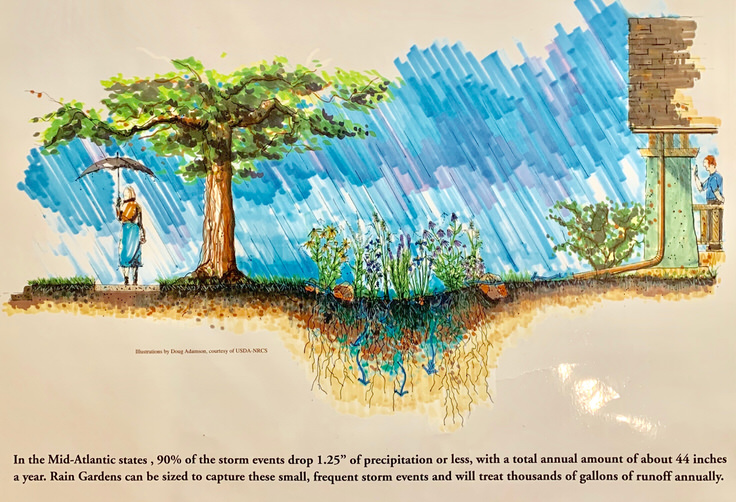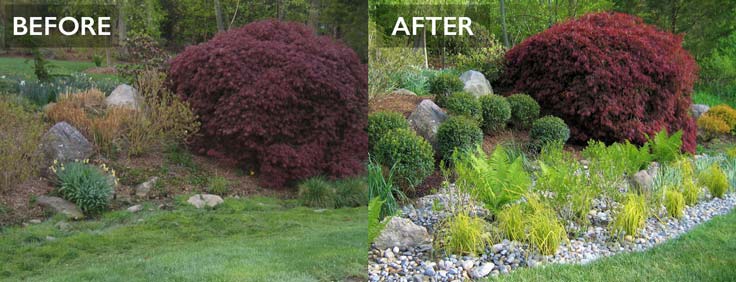As the saying goes, “April showers bring May flowers.” Obviously, proper watering is one of the most important factors for achieving and maintaining a beautiful landscape. Unfortunately, in many cases those April showers have unintended side effects. Besides pooling and puddling, which are common in yards with grading and drainage issues, the runoff from these spring rain showers can also carry pollutants into our water sources. That’s the bad news, and before getting down to the nitty gritty details, a little good news! There is an environmentally sound solution for dealing with this stormwater runoff…rain gardens. As defined by the Rutgers Cooperative Research and Extension rain garden fact sheet, a rain garden is a “landscaped, shallow depression that allows rain and snowmelt to be collected and seep naturally into the ground.”
The Problem
In order to understand how a rain garden functions and why they are a solution to a serious problem, we must first understand the problem. Stormwater runoff is the water that runs over the ground, especially on impervious surfaces such as driveways, sidewalks, and rooftops, and thus prevented from naturally soaking up into the earth. This runoff can become polluted by fertilizers, pesticides, oil, bacteria from pet waste, and more. Typically, this runoff then washes into roadways and down into storm drains. This water can and does end up in local water bodies. In a town like Ringwood, New Jersey (where CLC Landscape Design is located), preventing polluted runoff from entering local bodies of water is incredibly important. Ringwood is home to the Wanaque Reservoir which supplies water to more than 3.5 million people in northern New Jersey. By constructing a rain garden, polluted runoff is soaked into the ground where the pollutants are filtered out and biodegraded by microorganisms.
The Solution? Rain Gardens!
To the untrained observer, a rain garden looks like any other garden. However, a rain garden allows up to 30% more water to soak into the ground compared to the average lawn. By absorbing polluted runoff, rain gardens help to reduce non-point source pollution, protect local waterways, and provide wildlife habitat. Due to the fact that they are landscaped, rain gardens are not only an environmentally sound solution for dealing with runoff, but also a beautiful addition to any landscape.
We believe that it takes a trained professional to build an efficient rain garden. However, if you were planning on building your rain garden, here are some guidelines to keep in mind while planning and constructing your rain garden:
- Observe your yard and pay attention to where runoff collects. A rain garden can be located near downspouts to collect runoff from your roof. Another great location for a rain garden is along a driveway or sidewalk.
- A rain garden should be placed at least 10 feet away from your house. Do not install over a septic tank.
- Typically, allow approximately 100 – 300 sq. ft. for a rain garden. Size and depth of your rain garden is dependent on the amount of runoff and the soil type.
- When selecting plants, choose native hardy perennial species that can survive in both wet and dry conditions.
- Rain garden should receive 1/2 day to full-day of sunlight. Shade is not ideal.
- Include an overflow outlet for excessive rainfall.
Pollutants are a huge problem in New Jersey and rain gardens are a huge green solution to this problem. For more information, visit the Rutgers University Extension rain garden website. If you’d rather leave it in the hands of a trained professional, contact CLC Landscape Design today to discuss building a rain garden in your yard and thus do your part to minimize the polluting of local bodies of water!
(CLC Landscape Design’s Rich Cording Jr. is certified by Rutgers University to install rain gardens)







